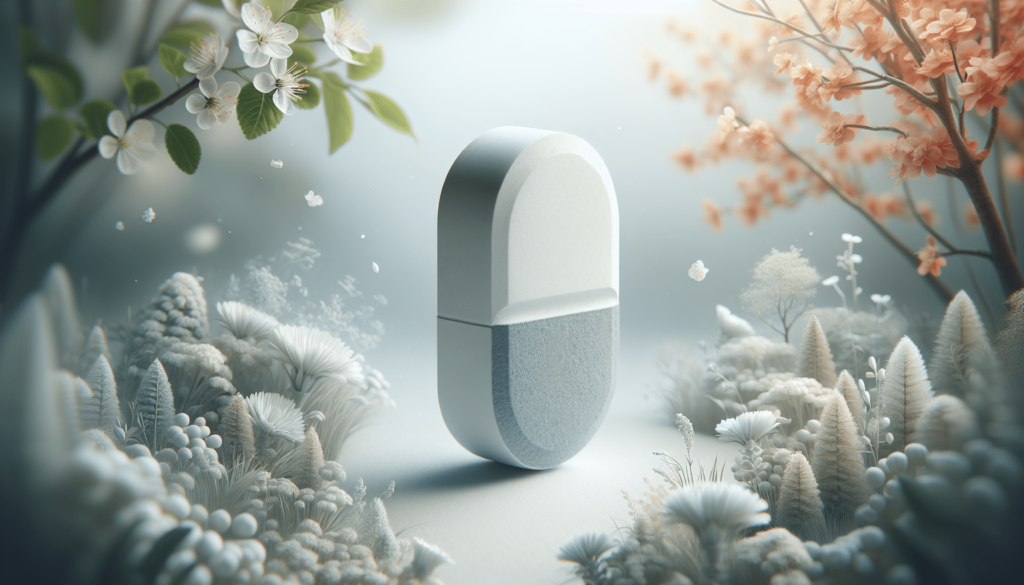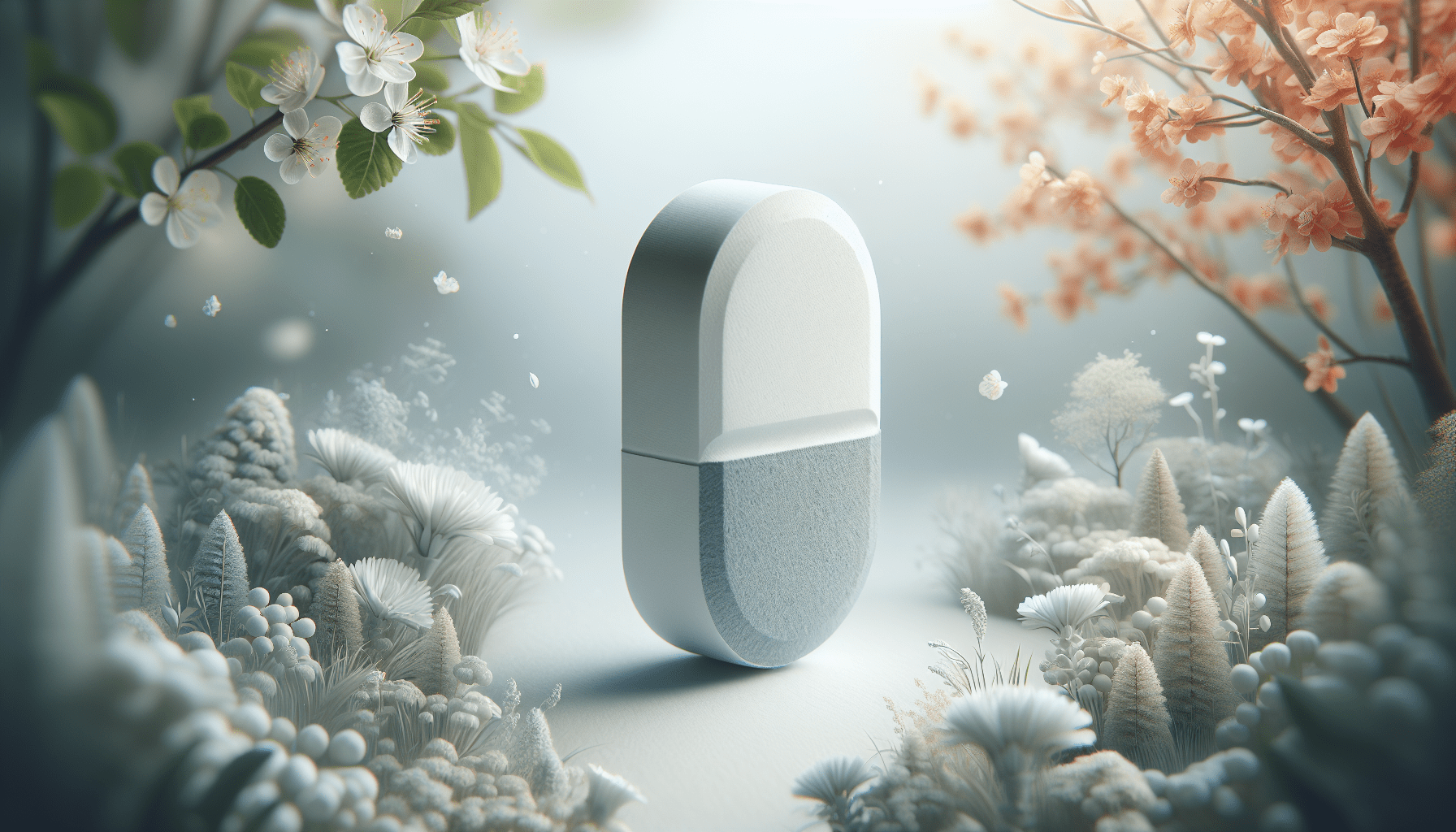As the flowers bloom and the trees sway, you may find yourself sneezing and battling itchy eyes. “Understanding The Role Of Antihistamines In Seasonal Allergy Relief” dives into how antihistamines can be your best ally in fighting off these uncomfortable symptoms. You’ll learn not only the science behind how these medications work but also how to choose the right one for your needs. It’s time to take control of your seasonal allergies and enjoy the outdoors again! Have you ever wondered why your nose gets stuffy and your eyes become itchy every spring? If you suffer from seasonal allergies, you’re not alone. Millions of people across the globe experience similar symptoms when the flowers start to bloom. But relief is at hand—often in the form of antihistamines. This article delves deep into understanding the role of antihistamines in providing seasonal allergy relief.

What Are Seasonal Allergies?
Seasonal allergies, often known as hay fever or allergic rhinitis, are allergic reactions triggered by certain elements in the environment. For most people, these allergens include pollen from trees, grasses, and weeds.
When these allergens come into contact with your nose or eyes, your immune system kicks into gear, mistaking them for harmful invaders. This results in symptoms such as a runny nose, itchy eyes, sneezing, and even fatigue.
Common Symptoms
| Symptom | Description |
|---|---|
| Runny Nose | Excess mucus production |
| Itchy Eyes | Irritation and redness in the eyes |
| Sneezing | Frequent, uncontrollable sneezing |
| Nasal Congestion | Stuffiness and difficulty in breathing through the nose |
| Fatigue | General feeling of tiredness due to constant allergic reactions |
The Science Behind Allergies
Understanding the science behind allergies can help clarify how antihistamines work. Allergies are exaggerated responses of the immune system to harmless substances called allergens. When an allergen enters your body, it triggers the release of a chemical known as histamine. Histamine is responsible for most of the symptoms you’ll experience, from itching to sneezing.
Role of Histamine
Histamine binds to receptors in various parts of your body, including your nose, lungs, and skin, causing those areas to become inflamed and produce more mucus. This is your body’s way of trying to expel the perceived threat, although it ends up making you feel miserable.
What Are Antihistamines?
Antihistamines are a class of drugs designed to combat the effects of histamine. By blocking histamine receptors, antihistamines reduce or eliminate allergy symptoms.
Types of Antihistamines
| Type | Description |
|---|---|
| First-Generation | Older drugs known for causing drowsiness |
| Second-Generation | Newer drugs that are less likely to cause drowsiness |
Both types have their pros and cons, which we’ll explore in the next sections.
First-Generation Antihistamines
First-generation antihistamines include drugs like diphenhydramine (Benadryl) and chlorpheniramine (Chlor-Trimeton). They are highly effective but come with significant side effects.
Advantages
- Effectiveness: Highly effective in symptom relief.
- Availability: Over-the-counter and widely available.
Disadvantages
- Drowsiness: Causes significant drowsiness, making them unsuitable for daytime use.
- Short Duration: Requires multiple doses throughout the day for continuous relief.

Second-Generation Antihistamines
Second-generation antihistamines like loratadine (Claritin), cetirizine (Zyrtec), and fexofenadine (Allegra) were developed to minimize the side effects caused by first-generation drugs.
Advantages
- Non-Drowsy: Less likely to cause drowsiness, making them suitable for daytime use.
- Long Duration: Usually require only one dose per day.
Disadvantages
- Cost: Generally more expensive than first-generation antihistamines.
- Slower Onset: May take longer to start working compared to first-generation options.
How to Choose the Right Antihistamine
Selecting the right antihistamine depends on various factors, including the severity and frequency of your symptoms, as well as your lifestyle.
Factors to Consider
| Factor | Consideration |
|---|---|
| Severity of Symptoms | Severe symptoms may require stronger medication, possibly first-generation |
| Lifestyle | If you need to stay alert, a second-generation option is preferable |
| Cost | First-generation antihistamines are generally cheaper |
Combining Antihistamines with Other Treatments
While antihistamines can be incredibly effective, sometimes they may not completely relieve all your symptoms. In such cases, combining antihistamines with other treatments can offer better results.
Nasal Sprays
Nasal sprays like fluticasone (Flonase) can help reduce nasal congestion. These are often used in combination with oral antihistamines for more comprehensive relief.
Eye Drops
For itchy, watery eyes, antihistamine eye drops such as ketotifen (Zaditor) can be beneficial.
Decongestants
Pseudoephedrine (Sudafed) is often used alongside antihistamines for significant nasal congestion. However, these should be used cautiously due to potential side effects like increased heart rate and blood pressure.
Potential Side Effects and Interactions
While antihistamines are generally safe, they can have side effects and interact with other medications.
Common Side Effects
| Type | Side Effect |
|---|---|
| First-Generation | Drowsiness, dry mouth, blurred vision, constipation |
| Second-Generation | Headache, dry mouth, mild drowsiness (less common than first-generation) |
Drug Interactions
Antihistamines can interact with other medications like sedatives, muscle relaxants, and alcohol, potentially enhancing drowsiness or other side effects. Always consult your physician before combining medications.
Special Considerations
Certain individuals may need to take special precautions when using antihistamines.
Pregnant or Breastfeeding Women
Some antihistamines are safe to use during pregnancy and breastfeeding, but it’s essential to consult with a healthcare provider.
Elderly Patients
Older adults may be more susceptible to the side effects of antihistamines, especially first-generation types, due to slower metabolism and other medications they may be taking.
Children
Children may require lower doses and should only take medications approved for pediatric use. Always read the labeling and consult a healthcare provider.
Natural Alternatives to Antihistamines
For those who prefer a natural approach, several alternatives may help alleviate seasonal allergy symptoms.
Herbal Remedies
Butterbur, stinging nettle, and quercetin are known for their anti-inflammatory properties and may provide relief.
Lifestyle Modifications
Avoiding outdoor activities during high pollen counts and using air purifiers at home can help reduce exposure to allergens.
Dietary Supplements
Omega-3 fatty acids and vitamin C are known to have anti-inflammatory benefits and may moderate allergy symptoms.
FAQs
Do antihistamines cure allergies?
No, antihistamines do not cure allergies. They only alleviate the symptoms.
How long can you take antihistamines?
Most antihistamines are safe for long-term use, but it’s essential to follow the advice of a healthcare provider.
Are there any lifestyle changes I can make to reduce allergy symptoms?
Yes, avoiding exposure to allergens, maintaining a clean environment, and staying indoors during high pollen counts can help reduce symptoms.
Conclusion
Understanding the role of antihistamines in seasonal allergy relief can empower you to make informed decisions about managing your symptoms. Whether you choose first-generation or second-generation drugs, or even opt for natural alternatives, the goal is to find a solution that best fits your needs and lifestyle.
Share this newfound knowledge with friends and family who may also be suffering from seasonal allergies. After all, a bit of understanding can go a long way in making those beautiful spring months more enjoyable for everyone!
